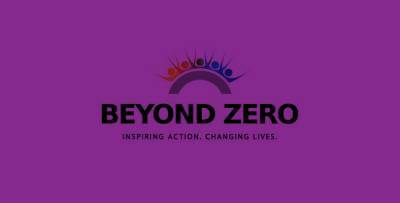Over the past few years, I have traveled across the country to speak with mothers about access to maternal newborn and child health services. I have heard inspiring stories that highlight the progress Kenya has made to ensure that women deliver safely and children are born healthy. Because of the Linda Mama initiative and the free maternity benefits it provides, mothers from all corners of Kenya, from Mandera in the North to Kwale in the Coast and Migori in the West, have been able to access care during and after pregnancy. They have been able to deliver safely without worrying about the burden of costs and have had their children fully immunized against vaccine preventable diseases.
But I’ve also heard heartbreaking tales of loss and despair. Many mothers shared stories of babies born too early, and the emotional, exhausting weeks that followed. The situation is even more precarious for women who deliver at home without skilled care, because for them a premature birth will almost always end in heartbreak for the family.
Unfortunately, too many mothers share this experience. Every year in Kenya, 193,000 babies are born prematurely making Kenya one of the 15 countries in the world with the highest number of premature births. Though simple, lifesaving solutions exist, many cannot access and therefore end up not receiving the care they need to survive. As a result, nearly 10,000 of these newborns die annually.
Neonatal mortality in Kenya is a tale of inequities. Poor, marginalized families, especially in remote rural areas, still struggle to access services such as antenatal care and are less likely to deliver in a health facility even where the services exist. Yet skilled birth attendance is a matter of life and death for vulnerable preterm babies. A mother’s age and education also significantly impact access to and use of health services crucial for a baby’s survival. As Kenyans, we must be our brother’s keeper by looking out for our neighbors and working together to mobilize communities to increase the uptake of existing services.
Much more needs to be done to ensure that a baby’s place of birth does not dictate its chance at life.
Fortunately, high-impact, low-cost solutions can improve the health of most babies born between 32 and 37 weeks. For example, Kangaroo Mother Care (KMC), or continuous skin-to-skin contact between mother and baby, protects preterm babies from infection, regulates body temperature, and promotes bonding. Exclusive breastfeeding is also a crucial part of KMC and provides all the nutrients a baby needs early in life. KMC services must be scaled-up across the nation and health workers must be trained to promote these lifesaving interventions. I am encouraged that we now have Kangaroo Father Care groups in Kenya, an innovative approach that allows men to play an important role in the survival of their children.
We must ensure that health workers have the commodities and equipment they need to respond to the needs of newborn. Chlorhexidine, an antiseptic used for umbilical cord care, can prevent infections responsible for 13 percent of newborn deaths globally. The care we give our premature newborns is only as good as the resources we invest.
In 2014, I launched Beyond Zero, an advocacy initiative aimed at ending preventable maternal and child deaths in Kenya. Since the initiative’s beginning, we have called for Kenya’s leaders to prioritize mothers, newborns, and children in policies and budget allocation. Just this week, Kenya launched a Newborn, Child, and Adolescent Health policy, which addresses prematurity as one of the leading causes on newborn death.
The true test of Kenya’s commitment to newborns—and to all mothers and children—is ensuring that policies are turned into action. Policymakers at all levels must commit to implementing these polices and allocating adequate funds to scale-up the services preterm babies require.
These efforts will build on the tremendous progress Kenya has already made. Through Linda Mama, we are providing women with free maternity services. Through a universal health coverage goals, we are reducing out-of-pocket expenses and increasing financial protection for vulnerable families. Yet if Kenya is to meet commitments to ensure its children survive and thrive—from the Sustainable Development Goals to the Every Newborn Action Plan—we must focus on vulnerable newborns.
On this World Prematurity Day, we should acknowledge the journey of preterm infants and their families and also raise awareness of the challenges faced by children born preterm. Beyond saving lives, we should ensure that we invest fully on health and also maximize their returns for both Kenyans and also the economy of Kenya.
MARGARET KENYATTA, FIRST LADY OF THE REPUBLIC OF KENYA
